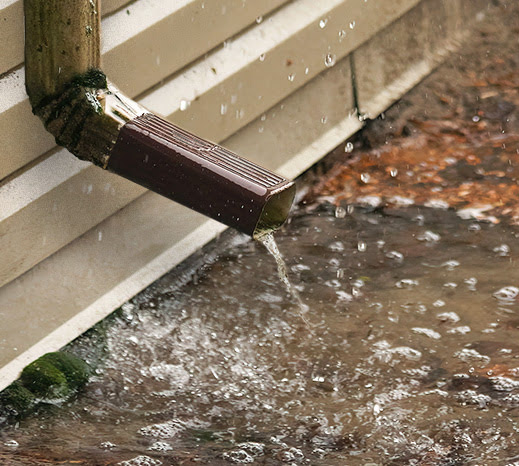Tidewater Roofing is here to help Virginia residents protect their homes and businesses from water damage. Here’s our in-depth look at what happens when water collects at the foundation of your building, and how you can prevent the damage it causes.

Many of us believe that a little bit of water never hurt anyone, but that isn’t the case when water sits at your foundation. If water isn’t kept away from your home’s foundation effectively, it can cause a lot of problems for your home and your health.

Soil Erosion

When too much water collects in the soil, it can cause the earth under your home to swell and shrink. If this happened uniformly, it probably wouldn’t cause too many problems, but that isn’t always the case. If water is allowed to pool in one spot near your foundation, such as where your downspout is pointed, it can have serious consequences. Soil erosion can cause a wide variety of problems because it prevents the ground from supporting your home evenly. If the ground beneath your home shifts unevenly it causes unintended stress on your foundation and the rest of your home, causing cracks and other damage.
Water Makes Cracks Worse

If water is allowed to seep into the cracks, it can cause secondary damage. When water freezes it expands, making the cracks worse and allowing more water into your home. This not only increases the amount of unwanted moisture seeping into your basement, but it also weakens your foundation, making it more susceptible to other forms of damage.
Flooding and Other Water Damage

If water isn’t directed away from your home effectively, it can also cause flooding and other moisture-related problems. Water may seep into your home through cracks over time, and depending on how much water is allowed in you may not notice until the damage has already been done. Heavy precipitation may lead to flooding, but even a little bit of unwelcome moisture can be cause for concern. Mold and mildew are not only unsightly, but they can also cause health problems. According to the CDC, indoor exposure to mold and mildew can cause upper respiratory tract symptoms including coughing and wheezing.
So What Can I Do To Protect My Foundation?
The best way to prevent water damage is to keep water away from your foundation in the first place. A good gutter system with correctly orientated downspouts, paired with strategic landscaping, can direct water away from your home and towards areas such as flower beds or storm drains. Flowerbeds and other greenery benefit greatly from rainwater and meltwater, and can effectively soak up water, protecting your foundation. Lawns are a great way to put unwanted water to good use, but the slope of your lawn plays a significant role in how effectively you can keep water away from your foundation. Ideally, your lawn should naturally slope away from your house, but that isn’t always the case. If your lawn is flat, or slopes downwards towards your foundation, it is even more critical that you position your downspouts with care.
Do an Annual Inspection
Once a year you should check your foundation for cracks or other signs of damage and document any potential problems. This annual inspection is best done in the warmer months so that any repairs can be completed before the first snowfall. You should also inspect your basement, and pay particular attention to any signs of water damage or cracking.
You should also clean your gutters at least twice per year, though you may need to do this more frequently if you have large trees surrounding your house. Cleaning your gutters can be a pain, but your gutters can only work effectively if they remain unobstructed. To help make cleaning your gutters easier, and prevent blockages from occurring, you may want to consider investing in a gutter guard.
Keeping water away from your foundation can prevent a large variety of serious structural problems. To do this, you should invest in a high-quality gutter system, keep it in good repair, and make sure it stays clear of leaves, twigs, and other debris by installing a gutter guard system. You should also make sure to inspect your foundation and basement at least once per year and get any damage repaired by a professional before winter.
